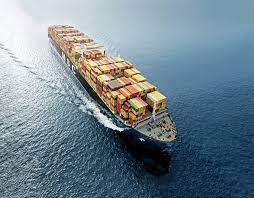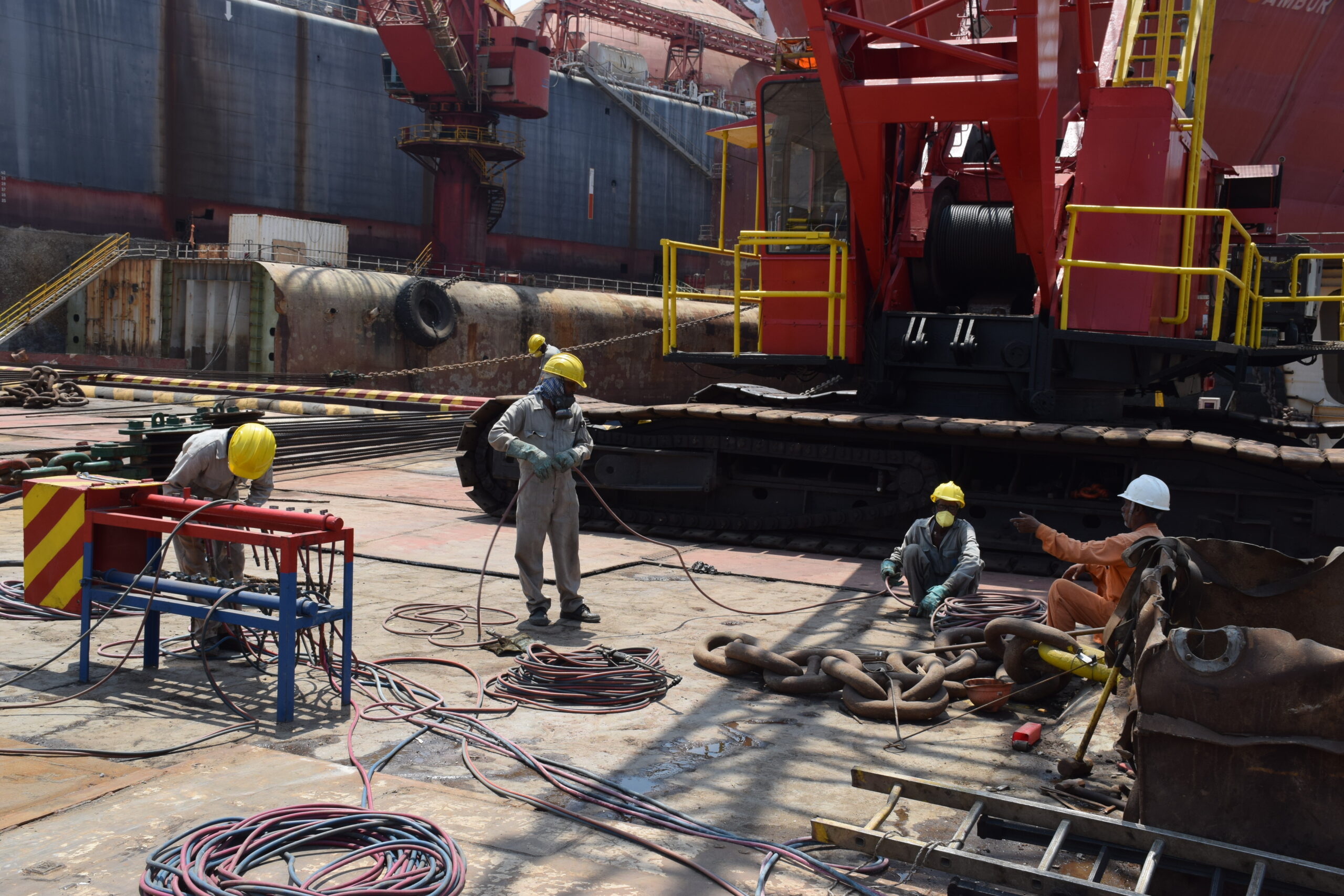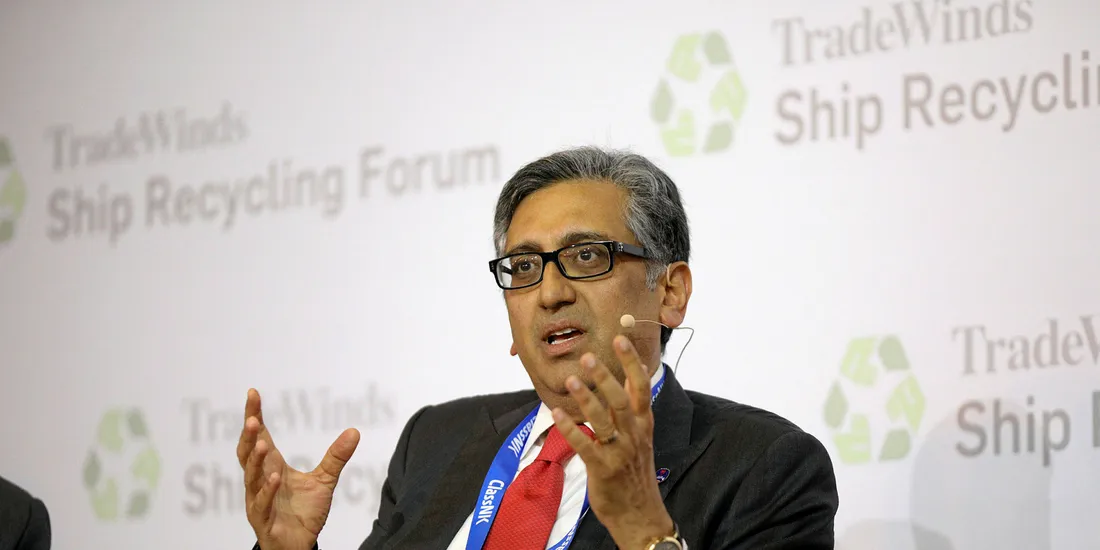Recycling Bottleneck in Container Shipping: Over 500 Vessels and 1.8 Million TEU Create a Growing Overhang
The global container shipping industry is facing a mounting challenge: a sizeable backlog of ships eligible for recycling is now trapped in continued service, driving what the shipping association BIMCO calls an overhang of at least 500 vessels, representing roughly 1.8 million TEU (twenty-foot equivalent units) of capacity.

In its weekly “Shipping Number of the Week” release, BIMCO’s Chief Shipping Analyst **Niels Rasmussen emphasises that only 10 container ships have been recycled so far this year—a continuation of the low-recycling pattern observed since 2021. The implication: a fleet of ageing container vessels continues in active service beyond typical retirement age, tying up capacity that could otherwise exit and make way for newer tonnage.
Ageing Vessels & Low Recycling Rates
The analysis points to a marked rise in older ships: the share of container ships aged 20 years or more has climbed from 16 % at the start of 2020 to around 24 % today—the highest proportion since the early 1970s. Historically, according to BIMCO’s review of the 2000-2019 period, about 20 % of box-ships were recycled before the age of 20 and 53 % before turning 25.
But that pattern has been broken. With few vessels being sent for dismantling, many are stretched beyond the standard economic or operational lifespan—either because market conditions remain favourable, or because ship-owners delay retirement in the hope of further earnings.
In effect, the recycling “pipeline” is clogged.
Estimating the Overhang
Using historical averages, BIMCO estimates the minimum overhang at 500 ships equating to at least 1.8 million TEU. However, in a scenario modelled under weaker market conditions (similar to the 2010s), the overhang could be as high as 850 ships or 3.1 million TEU.
For context: the highest annual recycling on record was achieved in 2016, when 185 container ships (about 600,000 TEU) were sent for demolition. By comparison, current activity is tiny—just 10 ships this year—underscoring the scale of the backlog.
BIMCO notes that this overhang exceeds the current order-book for all ship-segments smaller than 8,000 TEU—hinting at structural implications for fleet growth and cascading of larger vessels.
Why Is Recycling So Low?
Several factors are at play:
-
Strong market conditions: Until recently, container shipping has enjoyed high freight rates and demand, so ship-owners have little incentive to retire older tonnage when earnings remain robust.
-
Delayed retirement mentality: Vessels that would typically be recycled are kept in service longer, either through re-deployment to secondary trades or through reduced speed and earnings despite age.
-
Regulatory pressures and costs: Older ships face increasing regulatory costs (fuel-efficiency standards, emissions regulation, GHG) that may influence decision-making, but the economics of recycling vs continuing service are complicated.
-
Limited recycling capacity: With an ageing fleet, the ship-recycling industry in many regions is under pressure. For example, the Hong Kong Convention on ship recycling came into force in June 2025, raising standards and compliance costs at many yards. In India, an estimated 110 of 120 recycling yards are compliant; few in Bangladesh or Pakistan meet the Convention’s requirements.
-
Fleet renewal and order-book: With many ship-owners placing orders for newer, larger ships, the older vessels would typically be recycled to make way. But with recycling so low, the system is not clearing as expected.
Implications for the Industry
For the container fleet: An overhang of this scale means many older and potentially inefficient vessels continue to trade, which could undermine the economics of newer tonnage. Cascading of larger vessels into smaller trades may accelerate, potentially displacing smaller ships and altering trade-lane dynamics.
For recycling yards: The backlog presents both an opportunity and a challenge. There is ample potential for work, but the rate of recycling is far below what would be needed to clear the backlog in any meaningful timeframe. If activity remains at current levels, the overhang will persist for years.
For regulation and decarbonisation, Older ships are typically less fuel-efficient and have higher emissions. With decarbonisation becoming more important, the continued use of older tonnage may raise cost burdens, compliance risks or market penalties for owners.
For ship-owners and financing: The existence of such a backlog may influence asset values, resale markets, and charter-market dynamics. Owners may postpone recycling if charter rates remain attractive, but they also risk higher maintenance, regulatory compliance and obsolescence costs.
For trade and fleet renewal: The overhang being larger than the order-book for smaller ships suggests that fleet growth in the near future will likely be driven by larger ships. One outcome could be that older tonnage is forced into less lucrative trades, or that vessel size cascades faster than previously forecast.
Looking Ahead: What Could Change?
BIMCO notes that future recycling is very difficult to predict accurately, but the indications suggest that 6-10 % of currently trading ships (and 33-55 % of those older than 20 years) could be part of the overhang.
If market conditions weaken—freight rates fall, costs rise, regulatory burdens increase—then the incentive to recycle should strengthen, and the overhang might begin to be addressed. Conversely, if strong earnings persist, owners may further delay recycling, compounding the backlog.
From a recycling volume perspective, to clear even the low-end estimate (500 ships / 1.8 million TEU) at a pace equalling the 2016 peak (185 ships / 600,000 TEU) would require three years at peak pace—or longer, given that current recycling is far below that. Under the high-end scenario (850 ships / 3.1 million TEU), the timeframe extends further.
Moreover, because the overhang is concentrated in older ships, many of which will sooner or later require recycling regardless of market conditions, the pressure will build. Ship-owners, recycling yards, regulators and financiers all have a stake in how the backlog is resolved.
Key Takeaways
-
The container-ship recycling overhang is real and large: at a minimum of ~500 ships (≈1.8 million TEU) and potentially up to ~850 ships (~3.1 million TEU).
-
Only 10 container ships have been recycled so far in 2025—a fraction of what historical patterns would suggest.
-
Ageing tonnage (≥20 years) now accounts for 24 % of the box-ship fleet—up from 16 % at start-2020.
-
The backlog exceeds new-building activity in smaller ship sizes, which may reshape fleet growth dynamics.
-
Clearing the backlog will require stronger incentives to recycle, sufficient yard capacity compliant with international standards, and an environment where owners prefer recycling to continued trading.
-
For ship-owners, sustainable fleet renewal, for recycling yards, sufficient capacity and for regulators, oversight and standards—all are part of the systemic challenge.
As the industry navigates the twin pressures of decarbonisation and supply-side discipline, how the overhang of older container ships is managed will be an important barometer of structural change in global shipping. With a backlog of this size, even modest shifts in recycling behaviour could have far-reaching consequences for asset values, fleet composition and trade-route economics.
Final Word
The rusting hulks of an earlier generation of container ships may not yet be headed to the breakers—but the ticking clock on many of them is growing louder. For a shipping industry that has enjoyed the fruits of booming trade, the staging of a large fleet of “senior” vessels awaiting retirement poses a latent risk. Whether market weakness, regulatory pressure or shifting economics triggers a wave of recycling remains to be seen—but stakeholders would do well to keep one eye on the recycling yards, as much as the charter-market desks.
Author: shipping inbox
shipping and maritime related web portal








